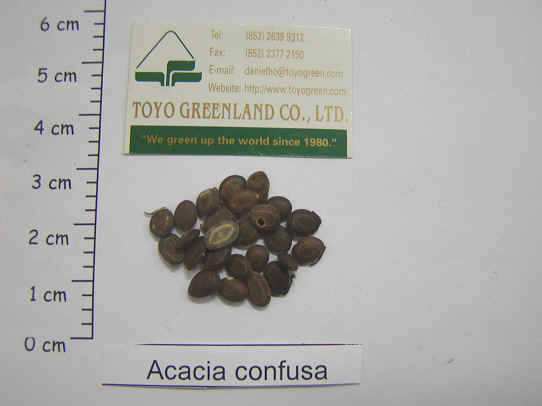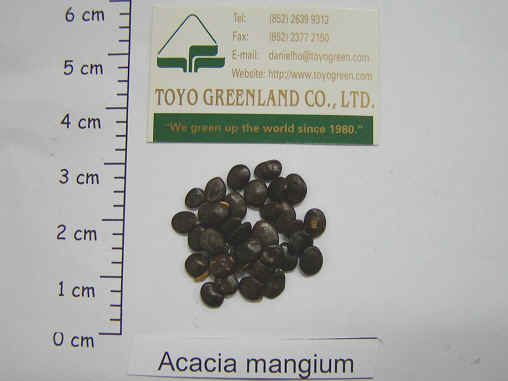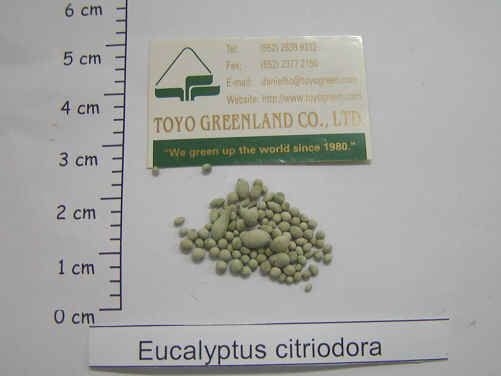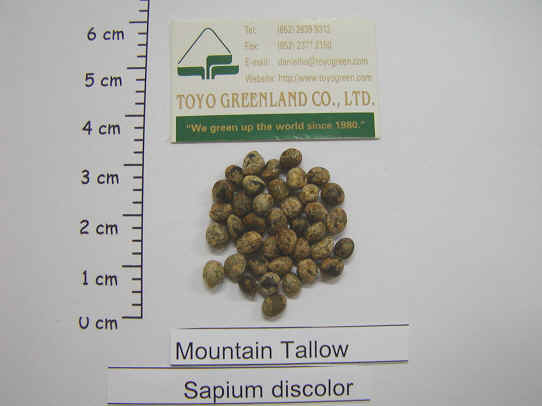Home Company Profile Plant Species R&D Toyo Tips Contact Us
Landscaping Hydroseeding Erosion Control Products Slope Vegetation System
Hydroseeding
Seed - Tree / Flower / Grass / Groundcover
Acacia confusa 台灣相思

Feature :The seeds of the Acacia confusa Merr also serve as its leaves, and there are two types of this tree: the first has pinnately compound leaves, while the second has phyllodia, which are flattened leafstalks with parallel veins. The phyllodia for the trees that have them are narrow, somewhat sickle-like, and roughly 6-10cm long and 1cm wide. The legumes of the Acacia confusa Merr are pencil-shaped, and the tree itself has many uses: they can be planted to serve as windbreaks, and their wood is suitable for making both railroad crossties and the support beams used in mining shafts.
Acacia mangium 耳果相思

Feature : Evergreen tree; leaves shaped like a long ellipse with the petiole flattened performing the usual functions of the leaf blade (phyllode). Fast growing and drought tolerant, can stand poor soil situations.
Eucalyptus citriodora 檸檬桉

Feature : The leaves are leathery and hang obliquely or vertically. The flower petals cohere to form a cap when the flower expands. The fruit is surrounded by a woody, cup-shaped receptacle and contains numerous minute seeds. Possibly the largest fruits--from 5 to 6 centimeters (2 to 2.5 inches) in diameter--are borne by E. macrocarpa, also known as the mottlecah, or silverleaf, eucalyptus.
The eucalypti grow rapidly, and many species attain great height. E. regnans, the giant gum tree or mountain ash of Victoria and Tasmania, attains a height of about 90 metros (300 feet) and a circumference of 7.5 m.
Sapium discolor 山烏桕

Feature : Leaves alternate, papery, reddish when young, leaf blade elliptic or oblong-ovate, 4 - 10 cm long, 2.5 - 5 cm wide, base cuneate, apex obtuse or shortly acuminate, with several rounded glands on near margin abaxially; midvein elevated on both surfaces, lateral veins 8 - 12, alternate or nearly opposite; petioles 2 - 7.5 cm long, biglandular at apex; stipules small, subovate, ca. 1 mm long.
![]() Hydroseeding Working Procedure
Hydroseeding Working Procedure
